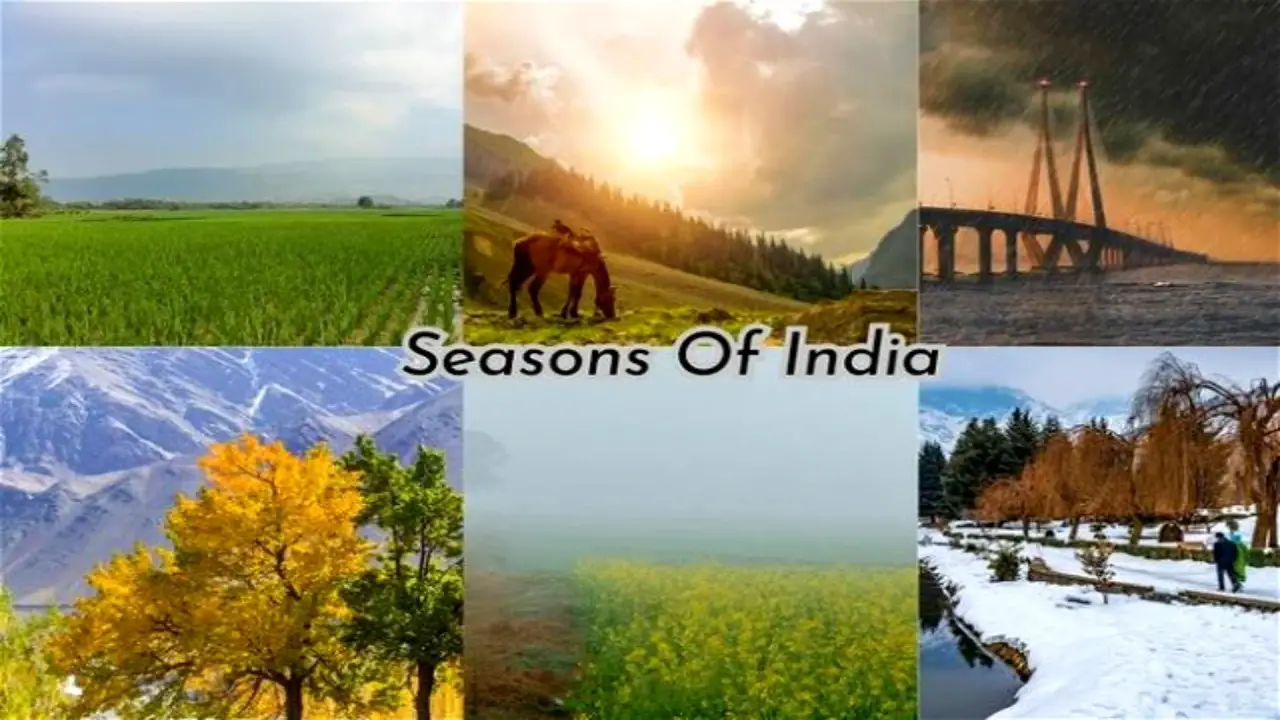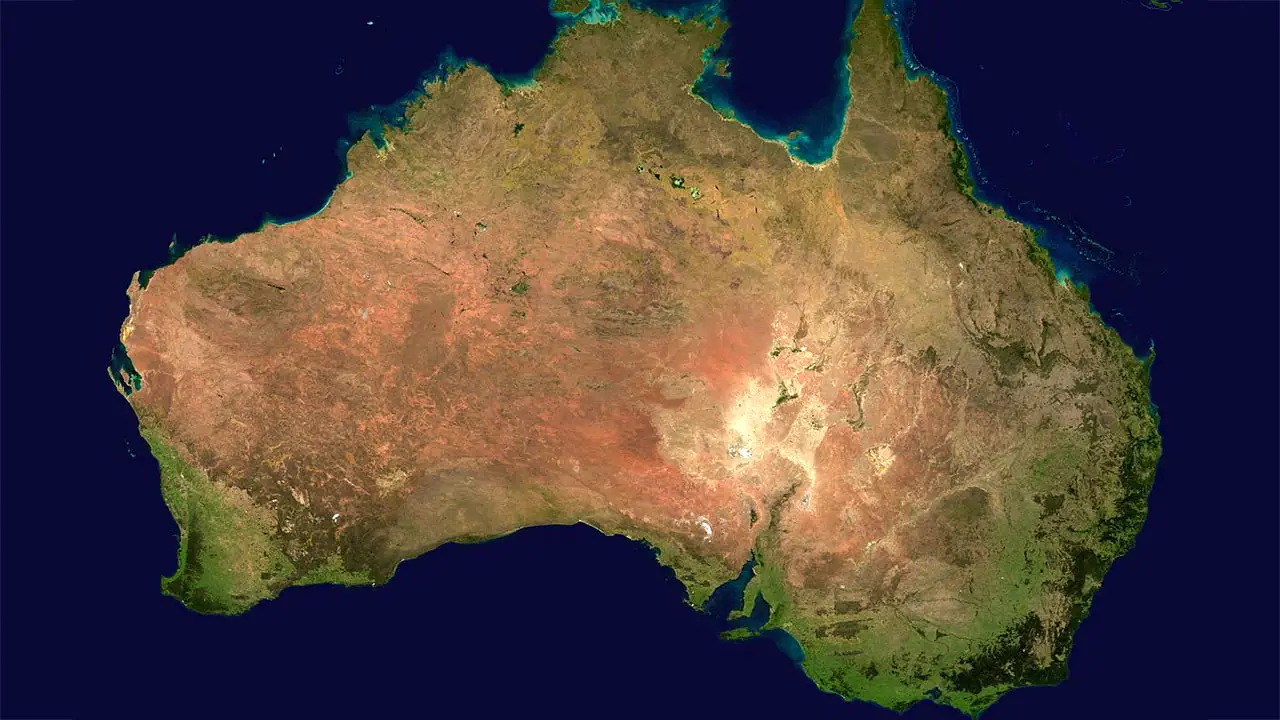Seasons are a natural phenomenon that has fascinated humans since the beginning. They bring about changes in weather, landscapes, and even human behavior.
While most countries experience four distinct seasons- spring, summer, autumn, and winter- there are some exceptions to this norm. As a result, the question arises: which country has the most seasons? This question has sparked extensive research and debates among meteorologists and geographers.
With abundant factors such as location and climate patterns. And geographical features, determining the country with the most seasons is not straightforward. We will delve into the complexities of this question and explore the countries that experience more than four seasons. We will also examine the reasons behind these countries’ unique seasonal patterns and their impact on their ecosystems and culture.

Which Country Has The Most Seasons – Know The Nature

Do you know which country has the most seasons? Bangladesh is known as the “Land of six seasons”. Unlike most countries with four seasons, Bangladesh experiences six distinct seasons yearly. These seasons are: Grishma (summer), Barsha (monsoon), Sharat (autumn), Hemanta (late autumn), Shhit (winter), and Basanta (spring).
Each season brings the country unique climate, weather patterns, and natural beauty. The diversity of seasons in Bangladesh adds to its charm and makes it a fascinating destination for travelers looking to experience a variety of climates and landscapes.
India: The Country Of Six Seasons

India is known for its rich and diverse culture, extending to its seasons. Also, India has six seasons, unlike many countries that typically experience four seasons. These include spring, summer, monsoon, autumn, pre-winter, and winter.
Each season brings its own unique weather patterns and cultural significance. From the vibrant spring festivals to the cool breezes of winter, India offers a remarkable variety of seasonal experiences. So, if you’re looking for a country with abundant seasons to explore, India should be on your list.
Sweden: The Land Of Four Distinct Seasons
Sweden is popular for its beautiful landscapes and diverse climate, so it experiences four seasons yearly, from the snowy winters, where temperatures can drop below freezing, to the mild and sunny summers.
Also, Sweden offers a range of weather conditions that make each season unique. Spring brings blooming flowers and longer daylight hours, while autumn paints the landscape with vibrant red, orange, and yellow hues. Whether you enjoy winter sports or outdoor activities in the summer. Or simply taking in the stunning natural beauty, Sweden is a country that truly embraces and celebrates all four seasons.
Australia: A Continent With Contrasting Seasonal Patterns

Australia is a unique continent that experiences contrasting seasonal patterns throughout its regions. Due to its vast size and diverse climate, Australia can be considered the country with the most seasons. The tropical North and South regions have two distinct seasons: wet and dry.
The wet season occurs during summer and is characterized by heavy rainfall and high humidity. On the other hand, the dry season, which takes place during the winter months, is marked by clear skies and cooler temperatures.
In the southern parts of Australia, such as Melbourne and Sydney, there are four traditional seasons: summer, autumn, winter, and spring. Each season brings its own unique weather conditions and natural beauty. So whether you prefer a tropical getaway or a cozy winter retreat, Australia has something to offer every season.
Japan: Embracing The Beauty Of Four Distinct Seasons

Japan is a country known for its beautiful landscapes and rich cultural traditions, and one of the reasons for this is its four distinct seasons. Unlike some countries that may only have two or three seasons, Japan experiences the full spectrum of seasonal changes throughout the year.
From the delicate cherry blossoms of spring to the vibrant foliage of autumn, each season in Japan brings its unique beauty and charm. This has deeply influenced Japanese culture, from traditional festivals and cuisine to art and poetry. Whether you visit in the blooming sakura season or the snowy wonderland of winter. Japan offers a truly immersive experience in embracing the beauty of all four seasons.
New Zealand: Experiencing Four Seasons In One Day
New Zealand is well-known for its unique weather patterns that allow visitors and locals alike to experience four seasons in just one day. The country’s location and geography mainly contribute to this phenomenon.
Situated in the southwestern Pacific Ocean, New Zealand is exposed to a wide range of weather systems, including prevailing westerly winds that bring changes in temperature and precipitation—Additionally, the country’s diverse landscape includes mountains and fjords.
Coastal areas further contribute to the rapid changes in weather conditions. So, if you’re planning a trip to New Zealand, remember to pack layers and prepare for all types of weather throughout the day.
Climate, Geography, And Cultural Influences On Seasonal Variations

Various factors, including climate, geography, and cultural traditions, can influence the number of seasons a country has. In some countries, such as India and China, the climate varies significantly from region to region, leading to diverse seasonal patterns.
For example, India experiences six seasons: summer, monsoon, autumn, pre-winter, arctic winters, and spring. Similarly, China has four distinct seasons: spring, summer, autumn, and winter.
Geography also plays a role in determining the number of seasons in a country. Countries with diverse topography may experience different climates in different regions. For instance, countries like Canada and Russia have vast territories that span multiple climate zones and have more pronounced seasonal variations.
Appreciating The Diversity And Beauty Of Different Seasonal Patterns
People can find the diversity and beauty of different seasonal patterns worldwide. While many countries experience the traditional four seasons of spring, summer months, autumn, and winter, some countries have a more unique and varied seasonal pattern.
For example, Japan is popular for its cherry blossom season in the spring and vibrant autumn foliage in the fall. Meanwhile, countries near the equator may not experience distinct seasons but instead have a wet and dry season. Regardless of where you are, taking the perfect time to appreciate and embrace the changing seasons can be a wonderful way to connect with nature and find joy in the ever-changing world.
Comparison Of Seasons In Different Countries

Different countries experience varying numbers of seasons throughout the year. While most countries have four distinct seasons – spring, summer, fall, and winter – there are some exceptions to this rule.
For example, countries closer to the equator tend to have a wet and dry season instead of traditional four seasons. In tropical regions such as Malaysia and Indonesia, they experience a monsoon season characterized by heavy rain season rainfall.
On the other hand, countries further from the equator, like Russia and Canada, often have longer and more extreme winters with shorter summers. The number of seasons a country experiences is influenced by its geographical location and climate patterns, making it interesting to compare the seasonal variations across different countries.
Factors That Influence The Number Of Seasons A Country Has
Several factors can influence the number of seasons a country has. These factors work together to determine the number and characteristics of seasons experienced in different countries worldwide. Here are a few key factors that can determine the number of seasons experienced in a country:
- Latitude: Countries closer to the equator typically have fewer distinct seasons, as they experience relatively consistent temperatures throughout the year.
- Climate: The climate of a country can also impact the number of seasons. For example, countries with a tropical country climate may only have two seasons – wet and dry seasons- while European countries with a temperate climate may have four distinct seasons – spring, summer, autumn, and day of winter.
- Topography: The topography of a country, such as mountains or coastal areas, can also influence the number of seasons experienced. Mountainous regions often have more pronounced seasonal variations due to elevation and average temperature changes.
- Hemispheres: Countries in the Northern and Southern Hemisphere experience their seasons at different times. For example, when it’s summer solstice in the Northern Hemisphere, it’s winter in the Southern Hemisphere.
What Are The Benefits Of Having More Seasons?
Having more seasons can bring a variety of benefits to a country. Overall, having more seasons adds diversity and richness to a country’s continental climate, culture, economy, and environment, offering numerous benefits to its residents and visitors. Some of the advantages include:
- Ecological Diversity: More seasons allow for a wider range of ecosystems and habitats, which can support a greater diversity of plant and animal species.
- Agricultural Productivity: Farmers can grow different crops yearly with more seasons, increasing agricultural productivity and food security.
- Tourism Opportunities: Different seasons attract different types of tourists, whether skiing in the late winter or enjoying beach vacations in the experience summer. This can boost local economies and create job opportunities in the tourism industry.
- Cultural Celebrations: Each season often brings unique cultural celebrations and traditions, providing opportunities for communities to come together and celebrate their heritage.
- Outdoor Activities: More seasons mean more opportunities for outdoor activities like hiking, swimming, skiing, and gardening, allowing people to engage with nature and stay active throughout the year.
Conclusion
The debate over which country has the most seasons may never be fully settled. Each country has unique climate and weather patterns, leading to varying definitions and interpretations of what constitutes a “season.
” However, what is certain is that each season brings beauty and charm no matter where you are. Whether you prefer the cozy days of autumn, the crisp snow of winter months, the blooming flowers of spring, or the warm sunshine of summer, there is something to be appreciated every season. So, instead of focusing country that has the most seasons, let’s celebrate the diversity and wonder of our ever-changing world.
Frequently Asked Questions
Why Does Bangladesh Have Six Seasons?
Bangladesh has six seasons because of its geographical location and climate. It is located in the tropical region, close to the equator, which experiences a wide range of temperatures and weather patterns throughout the year.
What Country Has 4 Seasons?
Many countries worldwide experience the four traditional spring, summer, autumn, and winter seasons. One such country is New Zeland, known for its breathtaking display of seasonal changes.
Which Country Has 7 Months Winter?
There is no specific country that has 7 months of winter. However, regions near the poles, such as parts of Canada, Russia, and Scandinavia, can experience longer winters with cold temperatures and snowfall.
What Is The Coldest Country In Asia?
The coldest country in Asia is Mongolia, where temperatures can drop below -40 degrees Celsius in the winter.
Which Is The No 1 Coldest Place In The World?
The No. 1 coldest place in the world is generally considered to be the high ridge of Antarctica, specifically the East Antarctic Plateau. This region experiences extremely low temperatures, with the lowest recorded temperature being around -128.6 degrees Fahrenheit (-89.2 degrees Celsius).
